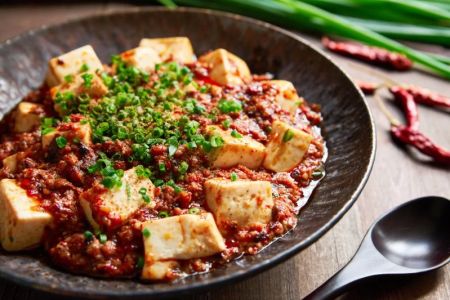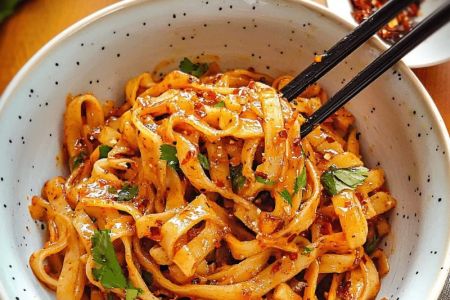- 1-Understanding-Pinterest-Platform
- 2-Crafting-Compelling-Visual-Content
- 3-Leveraging-Keywords-and-Hashtags
- 4-Engaging-with-the-Pinterest-Community
- 5-Using-Promoted-Pins-Effectively
- 6-Measuring-Performance-and-Optimizing-Strategy
1. Understanding Pinterest Platform
Pinterest stands out as a unique social media platform primarily focused on visual discovery and inspiration. For anyone wondering how to promote Chinese food on Pinterest, grasping the platform’s core mechanics is essential. Pinterest users frequently search for culinary ideas, recipes, and authentic food photography, making it a fertile ground for food-related marketing.
Unlike other platforms that prioritize short-lived posts, Pinterest content has a longer lifespan due to its search-friendly format and category boards. This means that a single well-crafted pin featuring Chinese cuisine can generate consistent traffic and engagement over months or even years. Understanding this evergreen nature is key to developing a long-term content strategy that attracts food lovers and potential customers.
Moreover, Pinterest’s audience skews heavily toward users interested in cooking, home dining, and culture, which aligns perfectly with promoting Chinese food. The platform offers business accounts tools such as Pinterest Analytics and rich pins, enabling marketers to track performance and optimize content specifically for food promotion. By leveraging these features, brands and restaurateurs can tap into a highly engaged community eager to discover authentic culinary experiences.
2. Crafting Compelling Visual Content
The cornerstone of promoting Chinese food on Pinterest lies in outstanding visual content. Pinterest is a visually-driven platform where high-quality images, videos, and graphics draw users in. When showcasing Chinese cuisine, attention to detail in presentation is crucial—authentic dishes with vibrant colors, textures, and garnishes resonate best with viewers.
Professional food photography that captures steaming dim sum baskets, lacquered Peking duck, or colorful Sichuan spices can evoke appetite and curiosity. But beyond static images, video pins demonstrating cooking techniques or quick recipe tutorials also significantly boost engagement. This dynamic content invites users to interact and save pins for future use.
Storytelling through visuals enhances authenticity and emotional connection. For example, featuring a family-owned Chinese restaurant’s story alongside their signature dishes can create a narrative that differentiates the brand from generic food content. Chinese Food website visitors can find inspiration and resources for sourcing authentic ingredients, recipes, and culinary tools, making the promotional efforts even more valuable and credible.
3. Leveraging Keywords and Hashtags
Effective keyword and hashtag use is paramount in answering how to promote Chinese food on Pinterest successfully. Pinterest operates as a hybrid of search engine and social media, so incorporating relevant keywords in pin titles, descriptions, and boards greatly improves discoverability.
Keywords such as “authentic Chinese recipes,” “easy Chinese dinner ideas,” or “traditional Chinese cooking” should be naturally embedded in descriptions. These phrases match what users typically search for, helping pins appear in relevant search results. Similarly, hashtags like #ChineseFood, #DimSum, and #ChineseCuisine help categorize content and allow users to find pins through hashtag searches.
Using a mix of broad and niche hashtags can expand reach while targeting specific communities interested in Chinese culinary culture. This strategy encourages organic traffic and attracts users who are already inclined toward Chinese food, making your promotion efforts more precise and effective.
4. Engaging with the Pinterest Community
Building relationships within Pinterest’s community is a strategic way to amplify Chinese food promotion. Interaction through commenting on popular food pins, collaborating with food bloggers or influencers, and joining group boards centered on Asian cuisine fosters trust and broadens your content’s exposure.
Community engagement helps turn passive viewers into active followers and potential customers. Responding to comments on your pins with helpful cooking tips or ingredient substitutions adds a personal touch that users appreciate. Additionally, partnering with culinary influencers who have a dedicated follower base can provide authentic endorsements that elevate brand credibility.
For instance, a small Chinese restaurant collaborating with a well-known food blogger on Pinterest saw a 35% increase in web traffic and online orders after sharing exclusive recipe pins and behind-the-scenes content. By participating actively rather than just broadcasting, your promotional efforts become part of a meaningful conversation.
5. Using Promoted Pins Effectively
While organic reach on Pinterest is powerful, investing in Promoted Pins can accelerate visibility and target audiences more precisely. Promoted Pins function similarly to ads, allowing you to select demographics, interests, and keywords that match your ideal customers interested in Chinese food.
For example, a Chinese Food brand could target users who have previously pinned Asian recipes or followed culinary boards related to international cuisine. This laser-focused targeting increases the chances of conversion and drives qualified traffic to your website or restaurant page.
Monitoring key metrics such as click-through rates, saves, and conversions during campaigns enables you to optimize ads continuously. Real-world cases have shown that Promoted Pins with compelling food images and clear calls to action outperform generic ads, leading to higher ROI.
6. Measuring Performance and Optimizing Strategy
To sustain success in promoting Chinese food on Pinterest, regularly measuring performance is essential. Pinterest Analytics provides detailed insights into which pins perform best, audience demographics, and traffic sources. This data-driven approach helps refine content creation and posting schedules.
For instance, if pins featuring traditional dishes like hot pot or dumplings receive more engagement than fusion recipes, focusing efforts on those themes makes sense. Testing different image styles, pin descriptions, and keywords also informs better strategies over time.
Continuous optimization based on analytics ensures that your promotion efforts evolve with user interests and platform changes. Meanwhile, Chinese Food website offers up-to-date resources and recommendations to help you stay ahead in sourcing authentic products and crafting appealing content that resonates with Pinterest’s audience.







